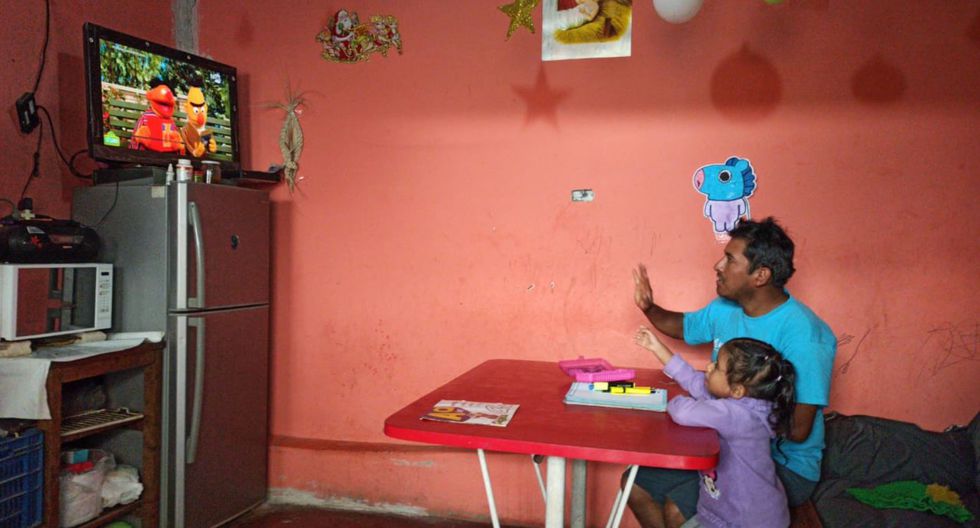Rosita looks through the window of her house in Guayaquil and remembers her school, her teacher, and her classmates. She does not understand why she can no longer go out to play with her friends in the neighborhood or visit her grandmother, nor why her father has not come to visit her in almost a month. Her mother has told her she needs to study and do homework following instructions on the television. She is part of the 95% of students affected by the closure of schools in Latin America and the Caribbean (LAC) due to the new coronavirus pandemic.
With this emergency, the dynamics between education communities and families have changed: teaching and learning processes, and social and extracurricular support. In the immediate term, the challenge of maintaining healthy education communities is being met by closing schools and providing school meals through alternative means. Now, steps must be taken to ensure:
- The student-teacher and family-school bonds
- Delivery of content aligned to the school curriculum
- Accompaniment and monitoring of the learning process.
What measures have countries taken to continue educational services? The solutions have depended on pre-existing infrastructure and available content to enable countries to quickly put together distance education models.
Uruguay was the only country in the region that was able to transition to virtual classrooms, having managed to close the digital divide, even with the challenge of reaching the most vulnerable students and with limited connectivity.
Chile made a strong showing with academic content (e.g. texts, guides and digital libraries), and began to distribute material through different means, from the Ministry of Education’s website to printing content in local newspapers.
In Peru, existing digital content was aligned to the school curriculum and is broadcast on TV and radio, in addition to educational programming such as Sesame Street.
Costa Rica is using “Aprendo en Casa” (Learning at Home), combining digital platforms with the transmission of educational content on TV, radio and Facebook, and is establishing an alliance with Microsoft to make their package of Communication platforms available to students and teachers.
In The Bahamas, internet access is being expanded so that all students can use the government’s digital learning platform, which will have new content and livestream classes; the Ministry of Education will send printed materials to students in areas with no connectivity.
Looking beyond LAC, Italy, Spain and China present examples of collaboration with other public and private actors to face the impacts of the pandemic on the education sector: in Italy, the public television agreed to modify its programming to provide more educational and cultural content; in Spain, the Ministry of Education and the Spanish Television began to transmit educational content through television, while in China, with the support of the Ministry of Industry and Technology, telecommunications companies and Internet providers contributed 7,000 servers and expanded the 90 terabyte bandwidth. The telephone companies improved their coverage in rural areas.
Countries are facing the challenge of prioritizing the curricular content and disseminating it through mass media to reach the entire student population in a timely manner. One-way transmission of educational content through TV, radio, digital material, and print, should be complemented by communication channels that bring students closer to teachers. Most of the countries chose to combine these different mediums, including learning platforms, digital content, TV, radio and physical material (see graph below), since, with the exception of Uruguay, most were not prepared to offer all their classes through digital platforms to all their students.

In LAC, more than 80 million students depend on school feeding programs, which represent an important transfer for families. These programs continue in 14 countries in the region. The main challenge has been to minimize the risk of exposure to COVID-19 during food delivery. For this reason, some countries like Chile are using protocols for the preparation and delivery of food. Countries are considering delivery models to homes and in schools.
In addition to guaranteeing continuation of education during the suspension of classes, the pandemic imposes new needs for the reopening of schools, from cleaning and hygiene measures to school accompaniment programs. What are other upcoming challenges that our education systems will face?
- take care of the social-emotional well-being of students and teachers: education systems play a fundamental role in the protection of children and youth. Countries should provide support for the socio-emotional well-being of students and teachers during and after school closures;
- guarantee inclusive continuation of education: the emergency may accentuate pre-existing learning gaps between different socioeconomic groups. In the short term, it is necessary to guarantee that the curricular contents reach the most vulnerable population and monitor their learning. In the medium term, additional reinforcement or support programs may be necessary;
- give attention now to the issue of the reopening of schools: the interruption of classes can lead to a higher percentage of students dropping out of school; this must be minimized, and measures should be taken to level the learning of more vulnerable groups. Likewise, it is necessary to ensure that schools have the minimum infrastructure and health conditions to allow a safe return to face-to-face classes.
There is still no certainty about the amount of time that schools will remain closed. According to authorities, the health emergency may last for several months. The urgency of the continuation of education from home will gradually give rise to the need for planning for the reopening of schools. It is essential to start this planning now.


Leave a Reply